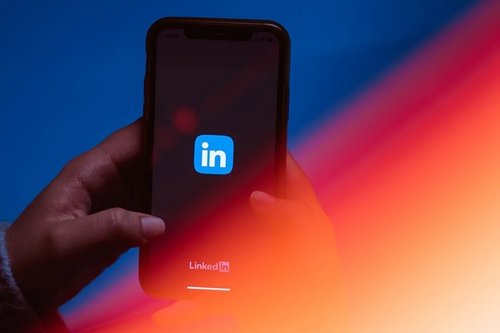Virtual job fairs: how to maximize your experience
Dec 27, 2022
4 mins


Writer
As anyone who has hunted for a new position knows, making real-life connections with potential future teammates is one of the most impactful ways to get noticed and land your dream role. And since everything we thought could only be accomplished in the physical world now has a digital counterpart, even the job fair has gone virtual. Untethered by distance or borders, virtual job fairs create new opportunities for both job hunters and recruiters. But can the caliber of networking you get from an in-person event be replicated online?
Virtual job fairs have revolutionized the way job seekers and employers connect in the digital age. Gone are the days of combing through endless job postings and sending out resumes blindly. With virtual job fairs, job seekers can connect with hiring managers and recruiters in real-time, through virtual booths, live chat features, workshops, and panels. Not only are virtual job fairs convenient and cost-effective for both job seekers and employers, but they also provide an opportunity to stand out in a competitive job market.
To better understand them, how they work, and how to prepare for a virtual job fair, we spoke with Valery Caputi Lopez from the recruitment platform Brazen.
What is a virtual job fair?
Virtual job fairs (sometimes also called virtual hiring events) allow an employer to connect with candidates wherever they can get a WiFi connection, via their laptop, cellphone, or another web-based device. A company, school, or organization will use technology or a specific platform, such as Brazen, to orchestrate an online job fair with the same motivations and goals as an in-person one: to help job seekers land their next role and for employers to attract the best talent.
There are a few different job fair formats you may see. Caputi Lopez breaks it down like this: “In some cases, you’ll join one event and see booths for multiple employers. These are typically hosted by an organization that promotes the job fair to employers and job seekers,” she notes. “With other virtual career fairs, you’ll meet directly with one company that’s hosting the online fair. Many large companies host virtual career fairs where job seekers and hiring teams from locations across the country can meet virtually.”
How do virtual job fairs work, and how do you get started?
The registration process for a virtual job fair will depend on who is hosting it. “Usually, you’ll have to sign up ahead of time on a registration page and answer a few questions. Some employers may ask you to submit a resume before the event or answer a series of qualifying questions to see if your background matches the roles that particular career fair is focused on,” Caputi Lopez says.
Using the digital device of their choice, attendees can log in at the time of the event to interact directly with recruiters, employees, or hiring managers. They can correspond either via text, audio, or video chat.
Caputi Lopez notes, “At the event, there may be virtual booths where you can learn more about an employer, presentations where you can hear from speakers via live stream, and the chance to sign up to talk with someone directly. This is a great opportunity to connect with a potential employer, ask questions, and make a solid first impression.”
The benefits of a virtual job fair versus an in-person one
While there is something to be said about connecting with people in real life, there are many advantages to online career fairs.
The first is flexibility. As Caputi Lopez puts it, “[virtual job fairs] are convenient because they don’t require traveling to a specific location and managing all the logistics like transportation, parking, taking time off work, arranging childcare, or other details. Many job seekers love the convenience of attending before, after, or even during a break at work.”
Caputi Lopez points out that joining a virtual job from a comfortable environment alleviates some of the nerves you might experience in person. “For some job seekers, virtual career fair platforms are less intimidating, especially as we’ve grown more accustomed to navigating our lives online, being on video or conference calls, etc. Plus, you can keep a document or your resume open with some notes to refer to if that helps take some of the pressure off.”
Virtual job fairs also feel a little less formal. “They’re a quick and easy way to start a conversation with someone at a company you’re interested in working for,” says Caputi Lopez.
How to prepare for a virtual job fair: best practices
As with any in-person job fair or networking, preparation is your key to success. Here, Caputi Lopez shares five tips for how to prepare:
- Prep your space: You want to make sure where you’ll be joining in from is video-ready: a bright, comfortable, uncluttered, and quiet space is best.
- Familiarize yourself with the platform and tech: Ensure you have registered for the event and complete any platform sign-up tasks you’ll need to do ahead of time.
- Keep an up-to-date digital copy of your resume handy: Keep it open on a separate screen as a reference and have it ready to upload or send if needed.
- Practice makes perfect: Practice what you’ll say before you show up, like your elevator pitch and relevant strengths and experiences. Ask a friend to help you prepare so you can build your confidence.
- Be yourself & relax: Dress professionally yet comfortably and in a way that showcases your most authentic self. Remember that cultural fit is just as important as what your skills can offer. Staying true to who you are will help determine whether you’re a match for the team. And relax; this should be a fun experience!
Key takeaways: how virtual job fairs work and what to expect
If you want to attend a virtual job fair, here’s what you can expect before you attend and how to best prepare.
- Know the type of fair you’re attending: There are typically two types of virtual job fairs. One type is hosted by an organization with multiple employers, while the other is by one employer looking to fill roles within the company.
- Complete the administrative tasks ahead of time: Register ahead of time and familiarize yourself with the event format, schedule, and technology. Upload any necessary information or documents, such as the most up-to-date version of your resume.
- Prepare as you would for an in-person event: Sometimes we might feel that digital experiences don’t require as much effort, but you still want to treat a virtual job fair with the same integrity as you would an in-person one. Dress the part, do your research, join from a distraction-free environment, and have your resume handy to set yourself up for a successful event.
Photo: Welcome to the Jungle
Follow Welcome to the Jungle on Facebook, LinkedIn, and Instagram, and subscribe to our newsletter to get our latest articles every day!

More inspiration: Job hunting in the digital age
Navigate the digital job search landscape with these tips on online job search, social media job search, and using job search apps and tools.

LinkedIn etiquette: the thin line between authenticity and TMI
Ever cringed at a LinkedIn post that went too far? Discover the secret to striking the perfect balance.
Jun 19, 2023

The rise of AI-assisted resume building
AI is reshaping the job hunt. Learn how to harness its power for crafting irresistible resumes, and stand out in the job market!
May 17, 2023

AI for (not so) good: are recruitment algorithms a threat to atypical profiles?
AI may not be able to detect the unique qualities of atypical candidates who don't meet the specified criteria.
Mar 22, 2023

ChatGPT: are AI-generated cover letters the way forward?
Thinking of using AI to speed up your job search? Think again.
Jan 26, 2023

A recruiting revolution: why did NYC delay its landmark AI bias law?
AI ethicist Merve Hickok explains the ins and outs of NYC's new AI bias law—the first of its kind—and why it has been delayed until April 15, 2023.
Dec 26, 2022
The newsletter that does the job
Want to keep up with the latest articles? Twice a week you can receive stories, jobs, and tips in your inbox.

Looking for your next job?
Over 200,000 people have found a job with Welcome to the Jungle.
Explore jobs